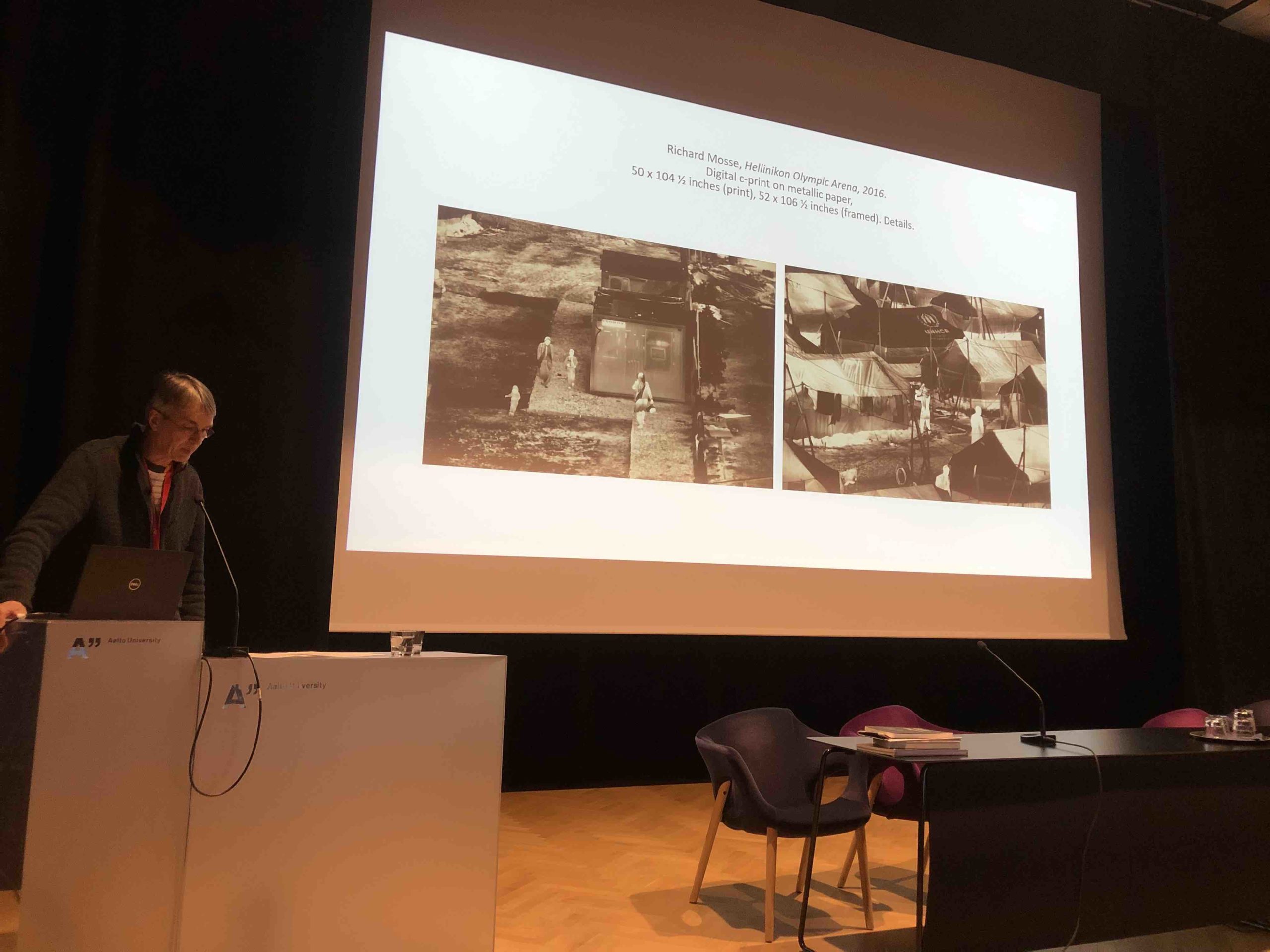On April 2, we presented a paper at Helsinki Photomedia 2022: the Fifth International Photography Research Conference at Aalto University School of Arts, Design and Architecture in Espoo. The conference, originally scheduled for 2020, was titled Images Among Us – a title alluding to the ubiquitousness of visual images in our media-saturated world.
In the paper, titled “Photography, Sensor Realism, and Criticality,” we gave a survey of our recent work on the photography of Richard Mosse, especially his project Heat Maps. In this project, Mosse used a thermal camera to produce long-distance photographs of people socially constructed as migrants and refugees during what is often referred to as the European migration crisis 2015–16.
We discussed Heat Maps in terms of sensor realism, appropriation, and alienation.
With the term sensor realism, we tried to grasp the overall operating procedures of Mosse’s photography; with the concept of appropriation, we suggested one specific approach with which researchers can address this photography critically; and with the notion of alienation, we aimed to grasp how this photography operates on observers and why such operation can be considered as critical.

Sensor realism refers to an aesthetic realism based on the replication of technologies. For example, artists may use drones to criticize the use of drones in warfare or they may utilize surveillance appliances to interrogate the surveillance society. Mosse operates a thermal camera to criticize the use of thermal cameras in border politics.
Sensor realism, thus, visualizes what we, through state agencies, see – and do – but what we do not allow ourselves, as citizens, to see.
Appropriation of Mosse’s work – the reuse of existing visual material (either in its entirety or in part) without substantially altering the immanent characteristics of the appropriated material – makes us acknowledge some degree of complicity with state practices; such acknowledgment, in turn, serves to think about research ethics and our subject positions, as scholars and citizens, vis-à-vis the politics of migration.
Alienation, finally, shows familiar things in unfamiliar ways. Mosse’s work deconstructs knowledge on migration and reveals what standard forms of representation hide, standard media approaches marginalize, and standard viewing practices disregard thus enabling viewers to change and adapt their habits of seeing migration or, for that matter, anything else.
Mosse’s work replicates technologies of sovereignty for which we, as citizens, are co-responsible. Appropriating his work confirms the responsibility that we inhabit as scholars and as citizens anyway, and from which we cannot easily escape. Visual recognition of all this allows us, as spectators and citizens, to start a thorough and informed discussion of the politics of migration and its visualizations.
We concluded that the criticality of Mosse’s work is neither an attribute of the photographs nor a function of the photographer’s intentions or of critical commentary. Rather, his artwork’s critical capacity emanates from triangular social processes connecting the artist, his artwork, and the audience. In this connection, in this conversation, we believe, lies critical potentiality.
